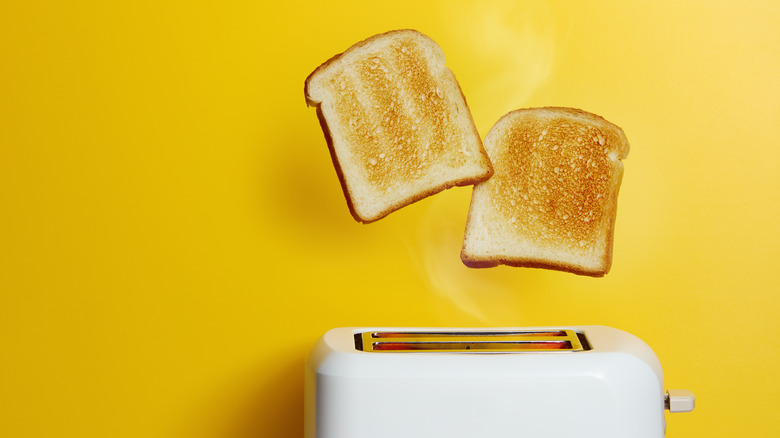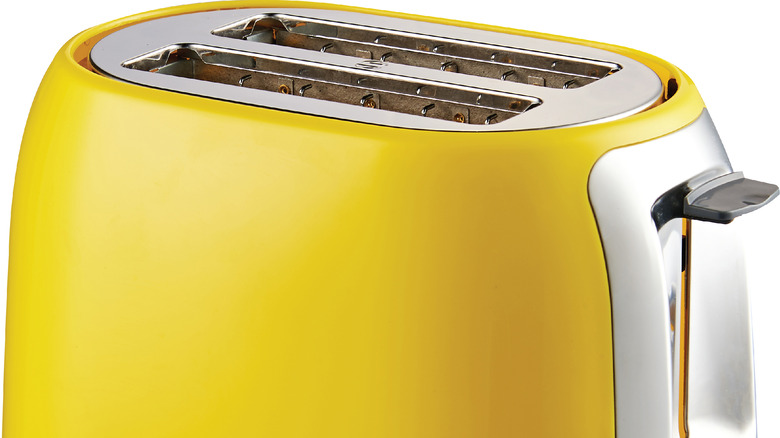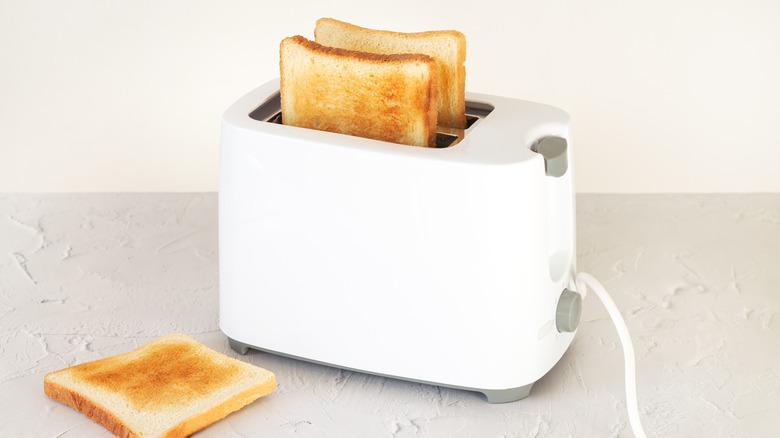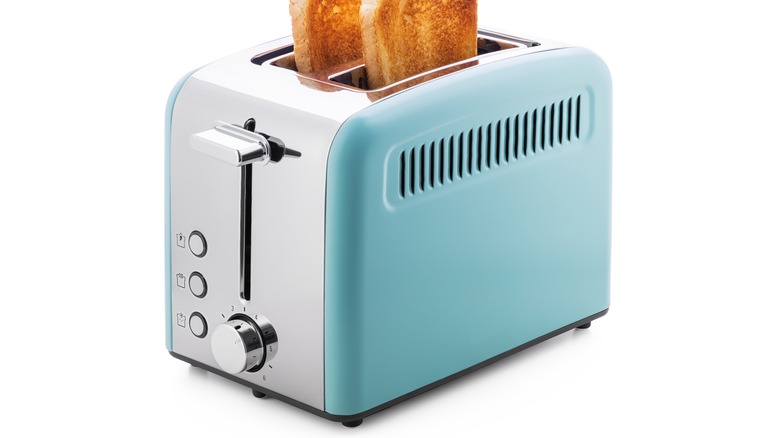Here's What The Numbers On Your Toaster Actually Mean
Ever heard the expression I'm toast? Not a good thing, right?
If you've ever rolled out of bed and shuffled hungrily to the kitchen only to bite into a charred slice, then you get the idea. But, there's a reason for toast's unshakeable spot as a breakfast staple. Back in 1859, Wilkie Collins wrote in The Woman in White, "My hour for tea is half-past five, and my buttered toast waits for nobody." Foodies around the world rave about new ways of crafting avocado toast or finding perfectly custardy cinnamon toast. The first Toastique location -– a now-world-famous gourmet toast restaurant –- opened in 2019 as the first of its kind, and has since expanded to over 15 locations nationwide. The results are in: people can't get enough — of buttered toast, that is.
So, toast is famously either the best thing ever or a total morning-ruiner. What gives? Your toaster might be to blame.
There are three different types of toasters, and each type assigns a different meaning to those numbers. Let's get into it.
Capacitor toasters
Capacitor toasters are the most common type of toaster living on household countertops. They're an ornament in the modern kitchen. For these toasters, the numbers take on a notoriously ambiguous meaning: level of "toastiness".
The titular "capacitor" is a mechanism inside the toaster that electrically charges to a determined voltage. Once the voltage is high enough, the capacitor shuts off, and your slice springs out (ideally) perfectly golden-browned. According to TreeHozz, these tiny capacitors can pack a powerful punch, funneling up to 2,000 amps of energy. So be sure to unplug them when not in use.The U.S. Department of Energy reports that those amps keep flowing whenever the plug is in the outlet.
The downside is that this benchmark level of voltage is different for every brand. Perhaps unsurprisingly, considering the volatile nature of this system, capacitor toasters vary highly from model to model. A level two "toastiness" at home might mean a charred bagel in the hotel lobby. Continental-breakfast-success hinges on the capacitor and its consistency (or, not).
Bimetallic strip toasters
Fallen out of favor with contemporary manufacturers, the bimetallic strip toaster is an enduring relic of appliances past. Think of the matte toaster on your grandmother's kitchen countertop that smells hot, even when it isn't plugged in. The bimetallic strip toaster uses a similar toasting process to capacitor toasters — with one important difference. A thin, bent metal strip inside the toaster is heated by electrical voltage. Once the metal reaches a high enough temperature, it bends, thereby severing the current that makes the toaster hot.
According to HowStuffWorks, the bimetallic strip mechanism poses two substantial drawbacks. First, if you make one batch and go back for more, the metal strip will already be heated up and therefore the bread won't stay in the toaster long enough. Second, if the metal strip has a lower initial temperature than usual, the bread will be toasted for too long. On a winter's day when the kitchen is cold, you're likely to end up with burnt toast.
Despite these downsides, oldies can be goodies. In bimetallic strip toasters, the numbers refer to the amount of voltage you're channeling. This is perhaps its greatest asset and the one that has granted the seemingly outdated technology its relevance. The bimetallic strip toaster is the Great Equalizer. A piece of bread and a crispy black slice are prepared in roughly the same amount of time. Don't have enough time to wait for that perfectly crunchy mouthful? The bimetallic strip toaster says you do.
Timer toasters
For timer toasters, the numbers refer to minutes — at last! Its across-the-board universality makes for a more predictable finished product. This is the most consistent type of toaster, and the outcome is more precise. In recent years, as the concept of "brunch" has emerged as more of a social event than a meal, toast is stepping into the spotlight as the main course.
Toast is a dish no longer confined to the early hours, and restaurants and home-cooks alike rely on toasters with consistency they can depend on. Admittedly, this dependability comes with a price; timer toasters are among the most expensive models on the market. This one from this Kalorik runs for $59.99, while this All-Clad model sits at $129.99. So, if you have the budget and time to wait for a specifically calculated time cook, the timer toaster might be your perfect bridge between the bread tie and a golden-brown mouthful.



